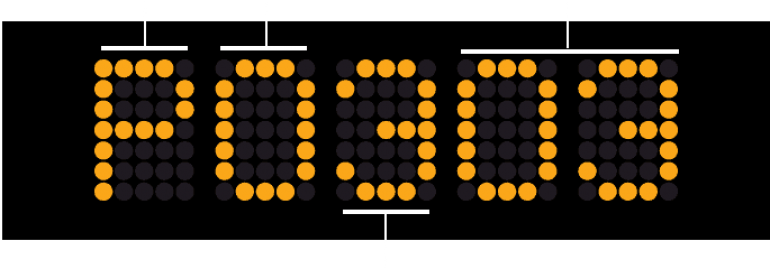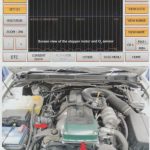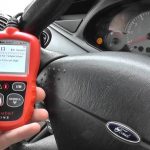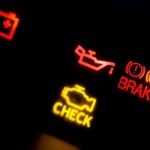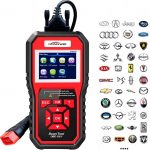If you are having problems with your vehicle, you may want to try clearing your car’s OBD2 codes. You can find a list of the most common codes by going to the DTC Codes page. If you don’t know what a DTC code is, you can always use the Search Bar to find out more. You may also want to learn about the various diagnostic methods and how you can use them to fix your car.
OBD2 is a standard for car diagnostics
If you’re wondering what OBD2 means and why you should use one to diagnose your car, then you’ve come to the right place. OBD2 is a universal standard for vehicle diagnostics, and the vast majority of cars and light trucks use this standard. The system includes engine and transmission modules, and other systems that can affect emissions. Other systems that aren’t related to emissions include airbags, ABS, traction control, and instrument cluster. Those systems can’t always be diagnosed with a standard OBD2 scan tool.
The OBD system, which started in the early 1980s, turned on the check engine light when a malfunction was detected. Before this system was implemented, codes were different for each vehicle manufacturer, making it difficult to diagnose a car’s problems. Manufacturers began to standardize the connectors and messaging format of the system, thereby making OBD2 diagnostic tools more widely used. Once all cars in the United States had the same standard, they were easier to diagnose problems for all makes and models.
The OBD2 system communicates with the computer inside the car. The engine controls the OBD system, while other parts of the car are monitored by this system. The system also provides information to the driver and mechanic. Through these protocols, you can diagnose and repair many problems and unlock your car’s potential. A car’s OBD reader can also read OBD2 codes and give you the information you need.
OBD2 information can also be used to diagnose other vehicles. For example, OBD II information is used by vehicle telematics devices and Pay-As-You-Drive insurance. The standard is made up of many different documents, including J1962, J2012, and J2411, which specify the physical connector and trouble codes for OBD. ISO 9141 is a standard for road vehicles diagnostics and ISO 11898 describes controller area networks.
It provides access to vehicle computer system
The OBD code is a unique sequence of letters and numbers used by vehicles to communicate with their on-board computers. If you’ve ever wondered how the On-Board Diagnostics (OBD) program works, then you’ve come to the right place. OBD codes can be accessed through the Data Link Connector, which is found on many cars today. You can identify the protocol your car uses by reading the ODB code and using it to perform diagnostics.
An ODB code can be used to troubleshoot any vehicle problem. OBD-II is a standardized version of OBD, reducing the need for multiple adapters and scanner accessories. Most OBD-II systems are identical, though some differ. The OBD code provides access to the vehicle’s computer system, and can be used to diagnose problems. You should know where to find the OBD port on your vehicle, as the connector is usually located under the glove box.
Basic code readers provide only a five-character code. To read more detailed codes, you can consult the manufacturer’s website or standard DTC list. You can also get a free diagnostic scan at an auto parts store if you don’t want to purchase a code reader. Normally, OBD-II diagnostic connector is hidden under the steering wheel, so it’s a good idea to use a code reader with a standardized pinout.
OBD-II standards were first issued by the California Air Resources Board in 1991, and were enforced by law starting with the 1996 model year. The resulting lack of standards posed increased difficulty for vehicle manufacturers and users. The new standard was implemented in 1994 and categorized all previous OBDs as OBD-I systems. In addition, it also mandated that all vehicles must undergo regular inspections, which are essential in determining the cause of a problem.
It uses a scan tool
If you’re looking to fix your car yourself, it’s crucial to have a scan tool on hand for OBD-II-compliant vehicles. The OBD-II communication protocol was introduced in 1996 and improved upon OBD-I in several ways. It specifies the types of diagnostic connectors, electrical signalling protocols, messaging format, and candidate list of vehicle parameters for the device to read. It also makes the diagnostic port standardized for all makes and models.
OBD-II codes are a set of diagnostic trouble codes that tell the mechanics about various problems in the car. The codes are a result of a malfunctioning component, circuit, or wiring system. But the codes don’t give a complete picture of the problem. Sometimes, they indicate that one component has failed but another system is also malfunctioning. In this way, proper diagnosis of OBD-II codes is a complicated process and requires years of training.
The scan tool will show you the diagnostic fault codes in numerical order, and a few others will allow you to write down the codes. Some tools will display the definition of the codes, so you can understand what each one means. To make sure that you have the right scan tool for your vehicle, it’s important to read the instructions and read the manual carefully. You can also download free software to read OBD-II codes.
While a code reader can read OBD-II codes, it doesn’t have the manufacturer-specific information available on the scanner. A scan tool is a better choice for many reasons. Not only does it give you more information on the problem, but it is also more convenient and affordable. You can buy a scan tool for odb-ii codes for as little as $50.
It can read and clear codes
Often, you can use an OBD diagnostic tool to find out the cause of your Check Engine Light. While these tools are not completely foolproof, they can be very helpful in identifying the problem with your vehicle. For example, if you notice multiple lights on your dashboard, the codes may indicate that the alternator is wearing out. These codes can also be caused by other issues, such as a loose gas cap.
If you’re not familiar with OBD codes, it can be difficult to interpret them. You might think that you’re the only one who knows about these codes, but these devices can help you figure out what’s wrong with your vehicle. Unlike other diagnostic tools, these devices can read and clear OBD codes without a technician’s assistance. Some scanners can even pair with your smartphone or tablet. Regardless of your vehicle model, an OBD diagnostic tool will help you get to the bottom of any car trouble or malfunction.
If your check engine light is on because of a problem with the gas cap, you can clear this code and turn off the light. Remember, however, that tightening your gas cap won’t always work. It may take up to 20 cycles for the system to recognize the change. Therefore, clearing system codes will allow your car’s computer to read and clear other malfunctioning codes. Furthermore, you can also use an OBD2 scanner to troubleshoot misfired spark-plugs and oil pressure. These diagnostic tools can even pull the vehicle identification number from the vehicle’s internal computer.
If you’re looking for a reliable and affordable way to diagnose the problem with your vehicle, then an OBD reader can help you. The OBD Auto Doctor car diagnostic software is the perfect choice. It has a PC and Mac version, as well as a mobile version for Android and iOS. In addition to reading and clearing DTCs, this OBD reader can also display a freeze frame. Using these tools can give you the peace of mind you need.


